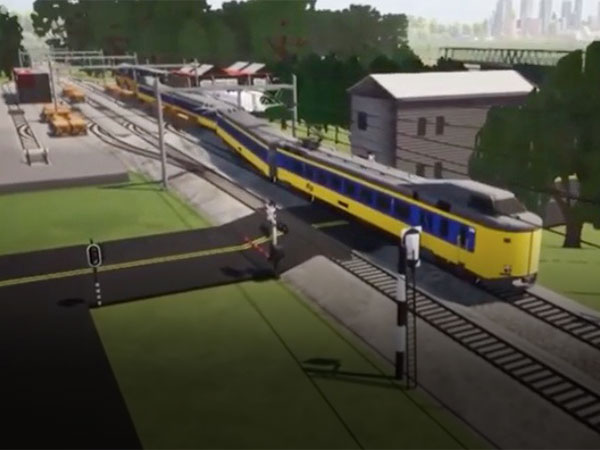Laos-Vietnam railway construction could begin by year end: developer
Construction of a railway linking Vientiane with the Vung Ang seaport in Vietnam’s Ha Tinh province could begin at the end of this year or early next year, its developer has said.
“If things go as expected, construction could begin at the end of this year or in the first quarter of next year,” Chanthone Sitthixay, Chairman of the Board of Directors of Petroleum Trading Lao Public Company (PetroTrade) – the project developer – told the President of the State Inspection Authority, Khamphan Phommathat, recently.
 |
| A conceptual design of the railway. |
It is expected that the first section of the railway to be built will be the 139.18-km track between the Vietnamese border and Thakhaek – the capital of central Khammuan province. Finance is expected to be sourced from an international financial institution to construct the section. The price tag for the single-track 554-km Vientiane-Vung Ang Railway is estimated to be as much as US$5 billion.
A feasibility study of the electricity-powered railway has been carried out and the developer is in the process of proposing a concession agreement with the Lao government. Last month, Mr Chanthone signed a Joint Venture Agreement with Mr Ho Minh Hoang, Chairman of the Board of Directors of the DEOCA Group Joint Stock Company of Vietnam, to push forward the construction of the railway in Vietnam. This section will link Mu Gia in Quang Binh province to the Vung Ang seaport.
The railway is part of the packaged Lao Logistics Link (LLL) project, which PetroTrade has been given the green light to partner with the governments of Laos and Vietnam to develop and operate.
Mr Chanthone gave an update on the latest developments concerning the railway to Mr Khamphan during his recent visit to the US$727 million Vientiane Logistics Park and Thanaleng Dry Port in Vientiane, which is also part of the LLL project.
Referring to financing, the Lao investor said the dry port, which opened for service in December 2021, was partially financed by the International Finance Corporation (IFC) - a member of the World Bank Group.
IFC’s financing of the project demonstrates the vital role the dry port and its associated projects play in driving the Lao economy, while boosting regional logistics links, the Lao developer said. The dry port has complemented other projects under the LLL, which include a planned logistics park in Khammuan and the Vung Ang seaport.
Through the seaport, freight, including that shipped from Thailand’s Issan region, will be able to reach markets in the Pacific region such as Japan, Korea, southern China, Russia, Indonesia and the Philippines using this cost-effective option. Set to link with the Thanaleng Dry Port in Vientiane - which houses the linked Laos-Thailand and Laos-China railways - the Vientiane-Vung Ang railway, when fully completed, will eventually connect to the planned regional rail network linking Kunming to Singapore via Laos, Thailand and Malaysia.
Through the China-Europe rail network, freight from Southeast Asia could reach European markets within 15 days – much shorter than the sea route which takes about 45 days. Mr Chanthone said the LLL project plays a crucial role in the regional and global logistics link that will significantly bolster the Lao economy. “Once the LLL project is fully implemented, it could expand Laos’ Gross Domestic Product by about 20 percent,” he said.
By Times Reporters
(Latest Update April 21, 2023)
|